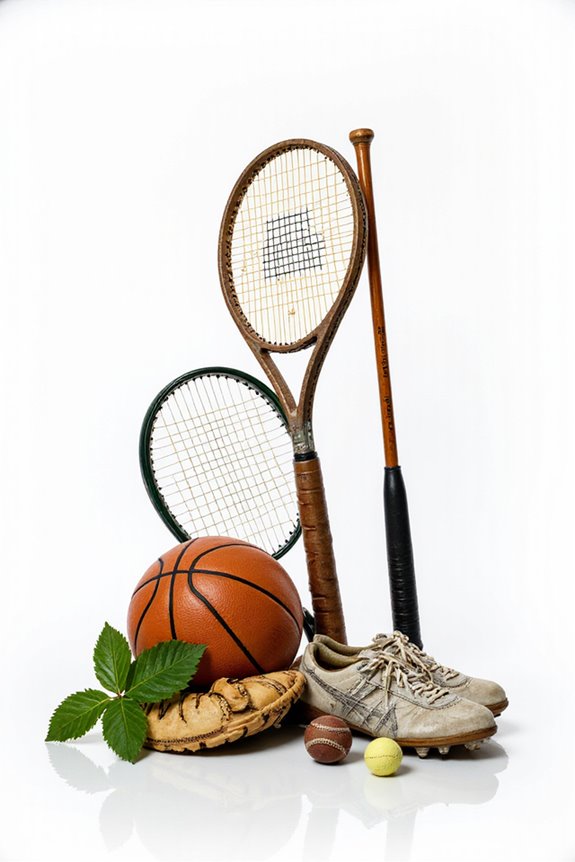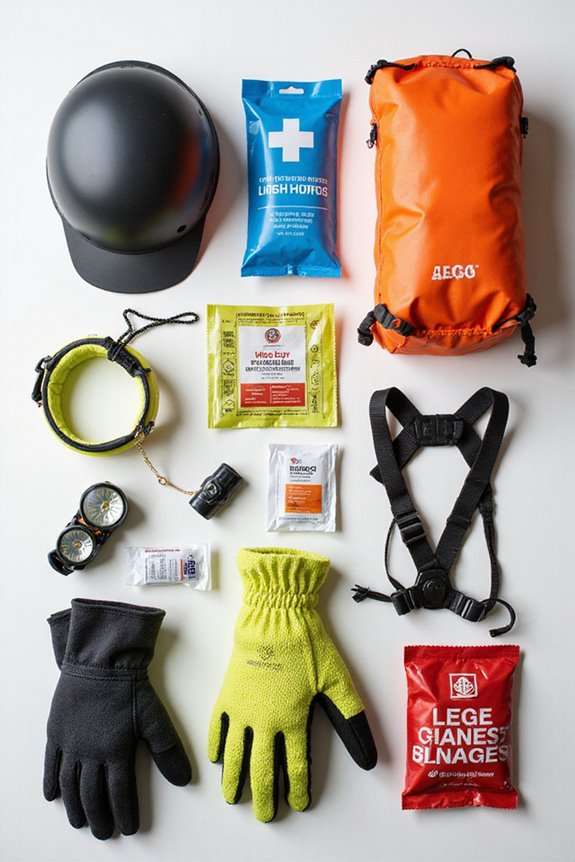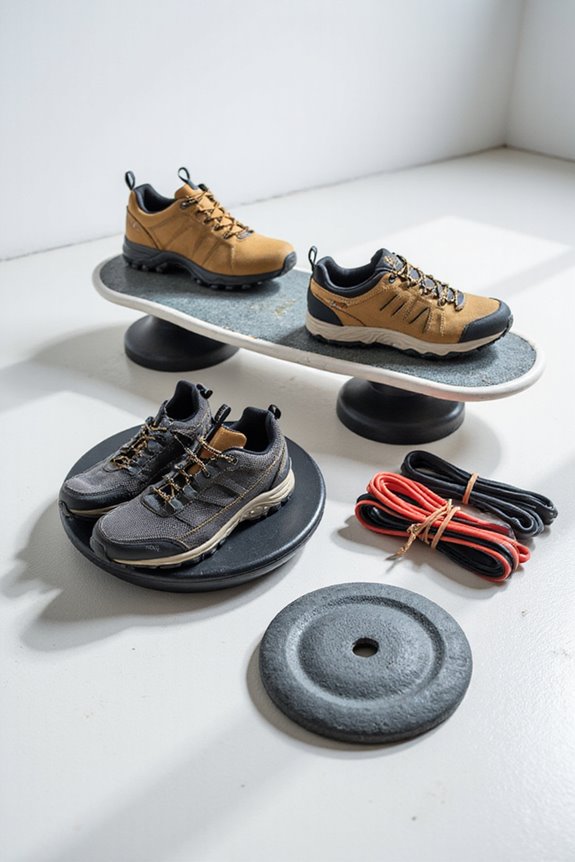Recycling old sports equipment can feel tricky, but it’s totally doable. Start by checking local donation programs; they often help aspiring athletes or underprivileged kids. If your gear’s too worn out, look into advanced recycling options. Some cool services even pick up items right from your door! Don’t forget to explore innovative recycling technologies, like those that break down complex materials. So, take a step toward making a difference and see how you can contribute more!
Key Takeaways
- Check local donation programs that accept sports gear to support aspiring athletes and underprivileged kids.
- Research organizations like Replay It and Leveling The Playing Field for safe and functional gear donation options.
- Utilize hassle-free online pickup services for donating sports equipment, making the process easier.
- Explore advanced recycling technologies, such as thermochemical recycling, for complex materials like carbon fiber.
- Participate in local recycling initiatives and corporate programs that facilitate the recycling of sports gear.
Understanding the Challenges of Recycling Sports Equipment
When it comes to recycling old sports equipment, one might think it’s as easy as tossing a worn-out tennis racket into a bin, but, oh, how wrong that assumption can be! The reality is, many sports items are made from complex composite materials like carbon fiber, which can complicate recycling efforts. With around 7,000 tonnes of this type of gear becoming waste each year, it’s clear that consumer behavior plays a huge role. Many people simply don’t realize how tricky recycling is, and that only 30-40% of donated bikes are even suitable for refurbishment. Plus, insufficient recycling infrastructure and strict regulations add to the challenge. So, while tossing that racket may seem simple, the journey of recycling sports gear is anything but!
Advanced Recycling Technologies and Their Benefits
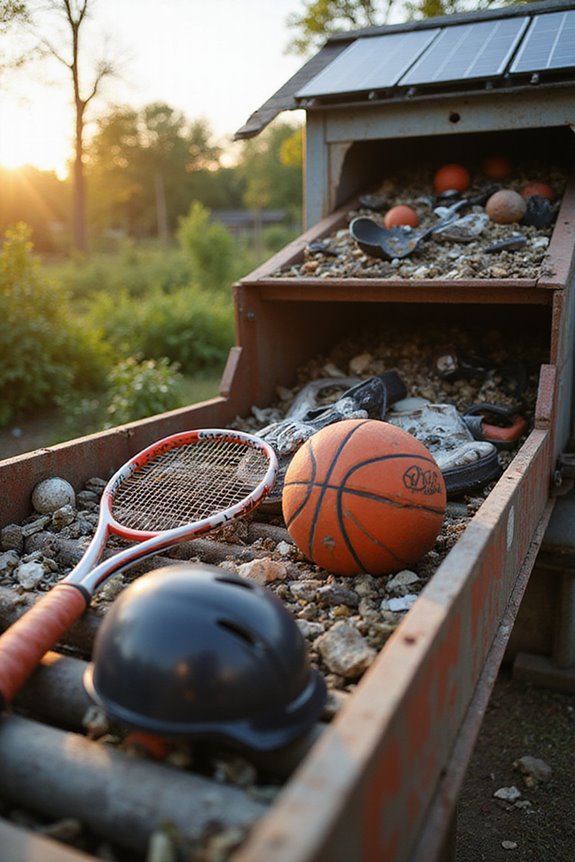
While it might seem like an intimidating challenge, advanced recycling technologies are stepping in to save the day for old sports equipment, transforming what once seemed like trash into treasure. Techniques like thermochemical recycling break down tough materials, such as carbon fiber, recovering impressive percentages of strength and stiffness. Imagine using those recycled fibers for new sports parts or even 3D printing! Initiatives like the Carbon Fibre Circular Alliance bring together manufacturers and sports federations, promoting sustainable materials and reduced waste. Plus, innovative textile recycling systems are evolving to tackle sports apparel, drastically cutting landfill waste. With these advancements, the world of sports gear recycling is not just feasible; it’s a vibrant path toward sustainability and environmental responsibility!
Options for Recycling and Donation
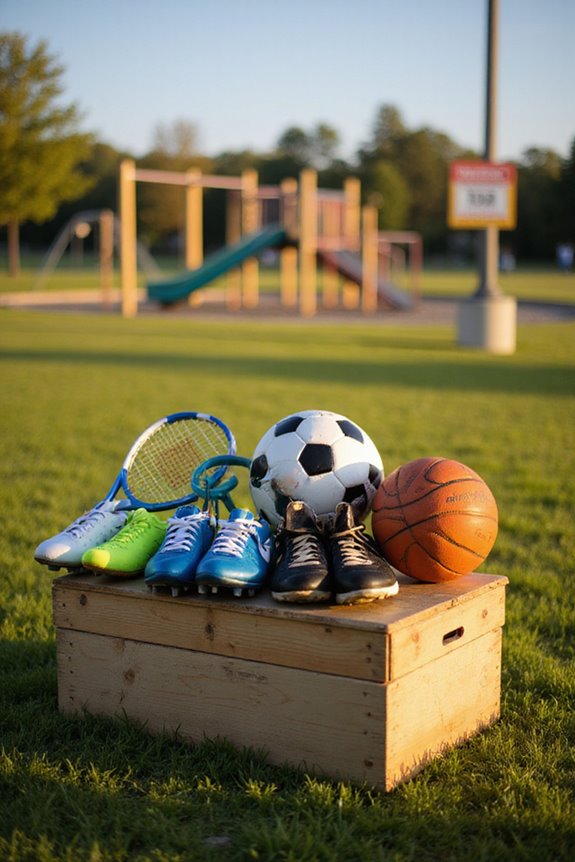
Recycling and donating old sports equipment isn’t just about clearing out clutter; it’s a chance to make a real difference in someone’s life. Many local donation programs and community organizations step up to accept gear, helping aspiring athletes and underprivileged kids thrive. Imagine your old soccer ball bringing joy to a child enthusiastic to play! Some organizations even offer hassle-free online pickups, making it easier than ever to contribute. Just remember, items should be safe and functional—no one wants a broken skateboard! Organizations like Replay It and Leveling The Playing Field guarantee your donations find their way to those who need them. So, let’s give that equipment a new life and inspire the next generation of athletes!
Corporate and Industry Initiatives Supporting Recycling
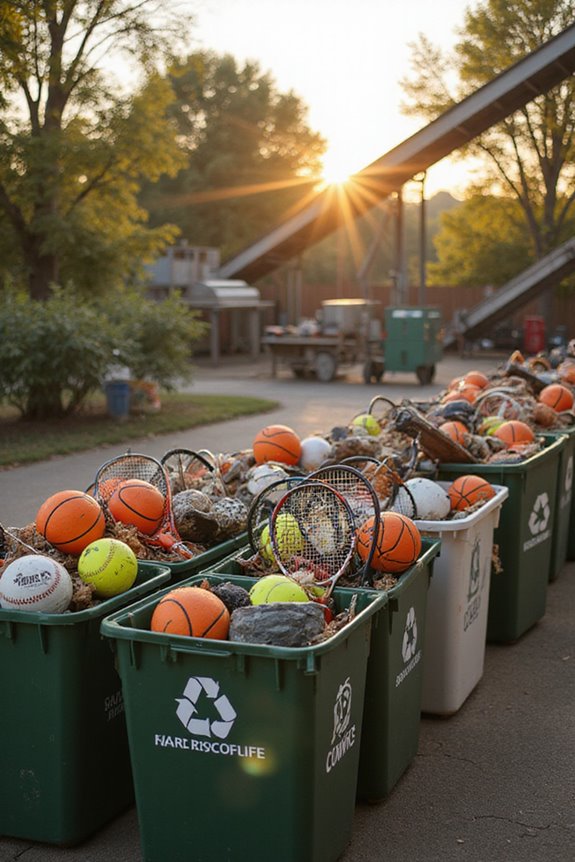
In today’s world, a surprising number of companies and organizations are stepping up to support the recycling of sports equipment, and it’s more than just a trendy move. Corporations like Tecnica Group are developing innovative recycling programs for items like ski boots, while cross-industry partnerships, such as TerraCycle teaming up with UC Santa Barbara, tackle challenging waste. Many local sports facilities even host collection points, making it easy for everyone to participate. Education plays a key role too, with companies leading campaigns that highlight the importance of recycling. By integrating these efforts into supply chains and collaborating with environmental organizations, corporate partnerships are not only enhancing sustainability but also inspiring communities to join the recycling revolution.
The Environmental Impact of Recycling Sports Equipment
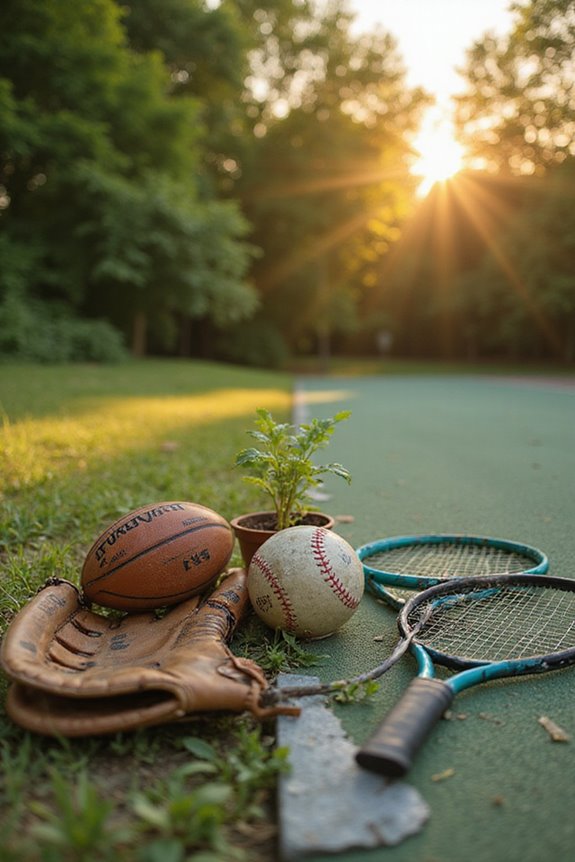
Sports equipment, like a worn-out pair of sneakers or a cracked helmet, can have a much bigger role in the environment than one might think. Many people hold recycling misconceptions, believing that tossing old gear into a bin is enough. The reality, however, is that plastic sports equipment often ends up in landfills, contributing to pollution and microplastic contamination, which harms wildlife and ecosystems. By recycling, individuals can enjoy environmental benefits, reducing the carbon footprint associated with manufacturing new gear. It’s not just about saving space; it’s about protecting habitats and ensuring healthier food chains. Embracing recycling can transform those forgotten items into new opportunities, proving that old equipment can indeed make a difference in our world.
Practical Tips for Consumers and Organizations
Old sports gear often lingers in closets, gathering dust while waiting for a second chance at life. Consumers can take charge by exploring accessible recycling programs like TerraCycle’s Sporting Goods Zero Waste Box or Wilson’s RecycleBalls, which turns old tennis balls into new products. Local recycling centers may offer specialized disposal options too, so it’s worth checking. For organizations, community engagement is essential; partnering with programs like LoadUp encourages collection drives, motivating members to recycle. Clear communication about the benefits of recycling education can spark interest and participation. Donating usable equipment to nonprofits extends its life, helping others while reducing waste. Together, these practices not only clear out clutter but also contribute to a healthier planet.
Future Trends in Sports Equipment Recycling
As the world shifts towards a more eco-conscious mindset, the future of recycling sports equipment is looking brighter than ever. Companies are embracing emerging materials, like recycled plastics from ocean debris, which Adidas is turning into trendy shoes. Innovative designs are not just about aesthetics; they focus on sustainable practices, such as using biodegradable materials and advanced textiles made from recycled polyester. The rise of second-hand markets and circular business models shows that consumers are enthusiastic to join the green movement. Plus, technologies like smart sensors and AI-powered gear are making waves, enhancing performance while promoting sustainability. With venues implementing recycling initiatives and community engagement, the future is not just about playing hard—it’s about playing smart!
Frequently Asked Questions
Can I Recycle Sports Equipment at Home?
Recycling sports equipment at home presents challenges due to mixed materials. However, individuals can explore reuse options and donation centers to extend the life of their items, promoting sustainability and reducing waste effectively.
What Sports Equipment Is Most Difficult to Recycle?
Recycling challenges abound in the domain of sports gear, particularly with composite materials and advanced footwear. The complex components hinder efficient processing, leading to significant waste as most equipment ultimately ends up in landfills or incinerators.
Are There Local Recycling Programs for Sports Gear?
Local initiatives and community programs exist to recycle sports gear. Organizations like TerraCycle and LoadUp facilitate the recycling process, while many communities accept donations, promoting sustainability and reducing waste in local sports programs.
How Do I Prepare My Equipment for Recycling?
In a hypothetical case, a community center prepares old bicycles for recycling through a thorough cleaning process and item disassembly. They remove non-recyclable parts, ensuring only clean, sorted materials are sent for efficient recycling.
Can I Recycle Sports Equipment Made From Wood?
Recycling sports equipment made from wood poses challenges due to treatments and coatings. However, wood recycling offers eco-friendly alternatives, such as energy recovery or repurposing, contributing positively to sustainability efforts in the sports industry.

